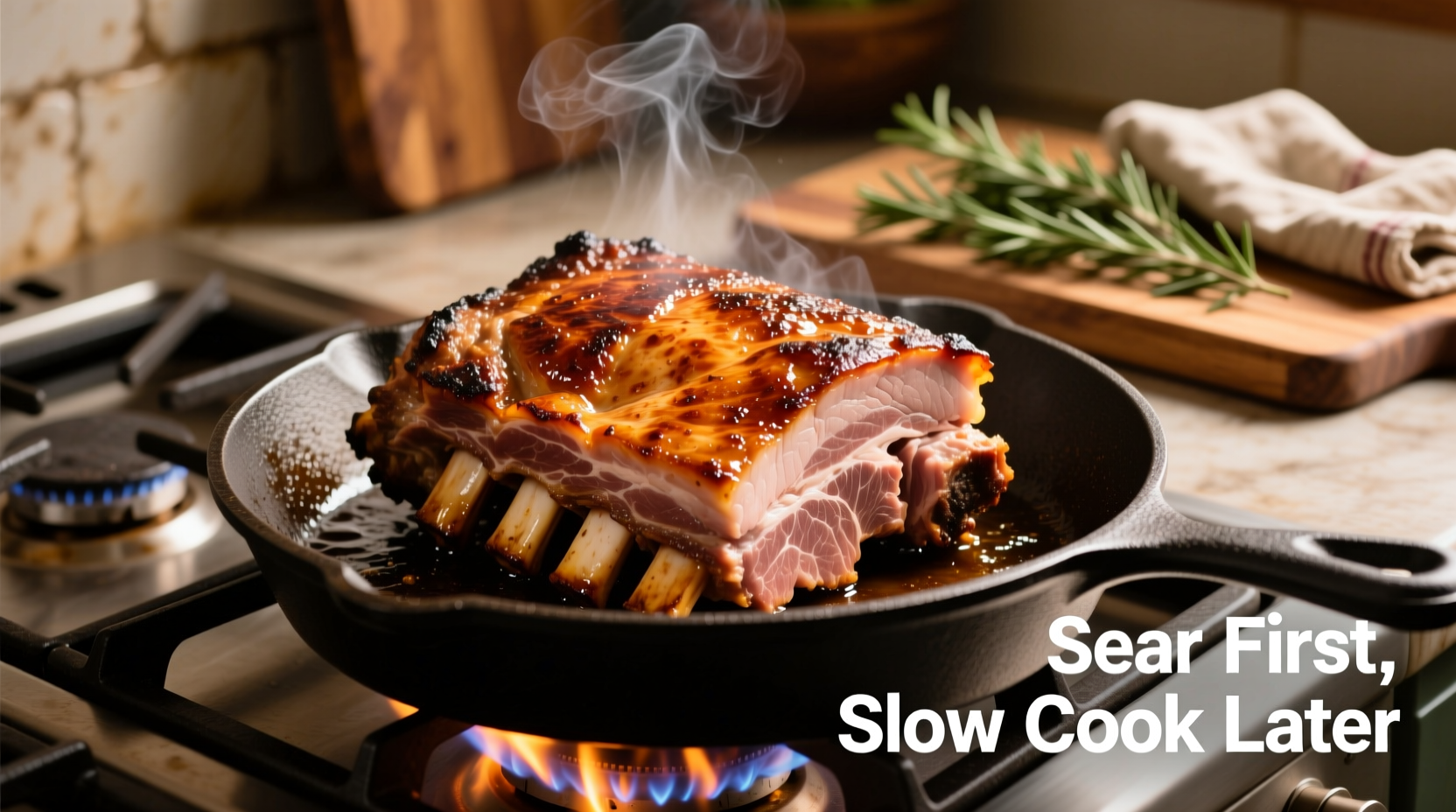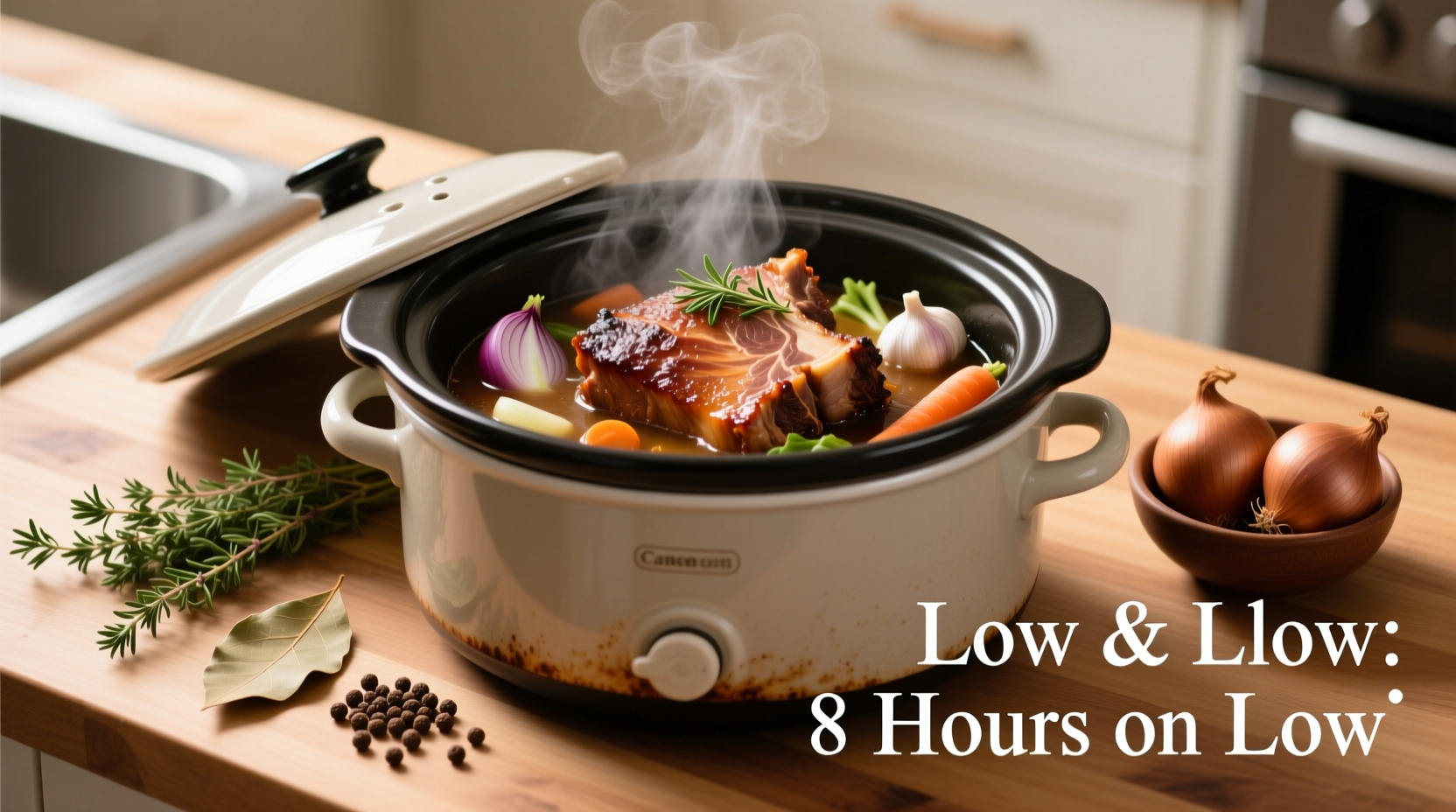The best method for cooking pork shoulder in a slow cooker requires 8-10 hours on low heat for a 4-5 pound cut, reaching an internal temperature of 195-205°F for perfect shredding consistency. Start with a well-trimmed bone-in pork shoulder, apply a dry rub with salt, pepper, and garlic powder, sear for enhanced flavor, then cook with minimal liquid to render fat and transform collagen into gelatin for melt-in-your-mouth texture.
Imagine coming home to the irresistible aroma of tender, fall-apart pork shoulder that shreds with a fork—no last-minute kitchen stress, just set-it-and-forget-it perfection. Slow cooking transforms this tough cut into succulent pulled pork through low-and-slow magic, making it the ultimate solution for busy home cooks seeking restaurant-quality results without professional skills. This guide delivers the precise techniques professional chefs use to guarantee flavorful, juicy pulled pork every time, backed by food science principles that eliminate guesswork.
Why Slow Cooking Excels for Pork Shoulder
Pork shoulder (also called pork butt or Boston butt) contains abundant connective tissue and fat marbling that would remain tough with quick cooking methods. The slow cooker's gentle heat gradually breaks down collagen into gelatin between 160-180°F, creating that signature melt-in-your-mouth texture. Unlike oven roasting, the slow cooker maintains consistent low temperatures ideal for this transformation while keeping moisture locked in.
| Cooking Method | Time Required | Texture Result | Hands-on Time |
|---|---|---|---|
| Slow Cooker | 8-10 hours | Fall-apart tender | 15 minutes |
| Oven Roasting | 5-6 hours | Good, but less consistent | 45 minutes |
| Instant Pot | 1.5 hours | Tender but less complex flavor | 20 minutes |
Selecting and Preparing Your Pork Shoulder
Choose a 4-6 pound bone-in pork shoulder—the bone enhances flavor during cooking. While boneless works, bone-in provides superior taste depth. Trim excess external fat to about ¼ inch thickness; this renders during cooking but too much creates greasy results. The USDA Food Safety and Inspection Service recommends cooking pork to 145°F for safety, but for pulled pork you'll need to go much higher to break down connective tissues.
Pat the meat completely dry with paper towels—this critical step ensures proper searing. Season generously with a dry rub of 2 tablespoons kosher salt, 1 tablespoon black pepper, and 2 teaspoons garlic powder. Let it sit at room temperature for 30 minutes while you prepare your slow cooker.

The Searing Secret Most Home Cooks Skip
Professional chefs universally sear pork shoulder before slow cooking—a step that creates complex flavor compounds through the Maillard reaction. Heat 1 tablespoon oil in a heavy skillet over medium-high heat until shimmering. Sear the pork on all sides until deeply browned (about 3-4 minutes per side). This isn't just about color; food science research from the American Chemical Society shows searing creates over 600 flavor compounds that simmering alone cannot produce.
Slow Cooking Process: Timing and Temperature Guide
Place ½ cup of liquid (apple juice, broth, or water) in the bottom of your slow cooker to prevent scorching. Add the seared pork shoulder fat-side up. Cook on LOW for 8-10 hours for a 4-5 pound cut. Do not open the lid frequently—each peek adds 20-30 minutes to cooking time. The National Center for Home Food Preservation confirms that slow cookers maintain temperatures between 170-280°F, perfectly within the range needed for collagen breakdown.
Check for doneness when the internal temperature reaches 195-205°F using an instant-read thermometer. The meat should feel completely tender when pierced with a fork, with minimal resistance. At this temperature, collagen has fully converted to gelatin, creating that signature pulled pork texture.
Finishing Techniques for Perfect Pulled Pork
Remove the pork shoulder and let it rest for 20-30 minutes—this crucial step allows juices to redistribute. Meanwhile, skim excess fat from the cooking liquid. Use two forks to shred the meat, discarding any large fat pockets. For authentic barbecue flavor, mix in ½ cup of your favorite barbecue sauce, but many pitmasters recommend serving sauce on the side to let the meat's natural flavor shine.
For optimal texture, return the shredded pork to the slow cooker with defatted cooking liquid and cook on WARM for 30 minutes. This allows the meat to reabsorb flavors without overcooking. The James Beard Foundation notes that this resting and reabsorption phase significantly improves moisture retention in slow-cooked meats.
Troubleshooting Common Issues
Dry pulled pork? You likely removed it too early—collagen needs time to fully transform. Return to cooker with additional liquid. Greasy results? You didn't trim enough fat or skipped skimming the cooking liquid. Not shredding properly? The internal temperature probably didn't reach 195°F—continue cooking in 30-minute increments.
Remember that slow cooker temperatures vary by brand. If your cooker runs hot, reduce time by 1-2 hours; if it runs cool, add 1-2 hours. Always rely on internal temperature rather than strict timing.
Serving and Storage Recommendations
Serve pulled pork on brioche buns with coleslaw for classic barbecue sandwiches, or use in tacos, nachos, or as a pizza topping. Store leftovers in an airtight container with some cooking liquid for up to 4 days in the refrigerator. The USDA recommends reheating to 165°F for food safety. Pulled pork freezes exceptionally well for up to 3 months—portion with cooking liquid for best results.











 浙公网安备
33010002000092号
浙公网安备
33010002000092号 浙B2-20120091-4
浙B2-20120091-4